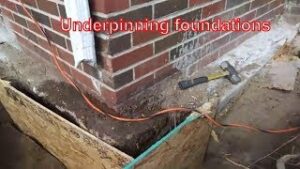Benefits of a Concrete Slab Foundation
3 min read
Concrete slab foundations are one of the most commonly used foundation types. This approach offers many advantages, including being relatively affordable and straightforward for installation.
Also, these buildings can present various drawbacks. When located in areas with cold climates, they are vulnerable to freezing which may shift foundation and cause major issues.
Cost
Price for slab foundations depends on factors like home size and style as well as soil conditions in the locality; typically however, these foundations tend to be more affordable than other options. Know more about Underpinning Melbourne.
An extremely basic slab foundation consists of concrete poured in one batch up to 6 inches thick directly onto the ground. This type of foundation can be quickly installed if your site already features footings for support.
Concrete slabs also require less materials and resources, lowering costs. Unfortunately, however, they don’t provide as much support than other forms of foundation.
Another drawback of a slab foundation is its lack of crawl space, which can cause moisture issues and make utilities like gas and water lines difficult to access. Furthermore, plumbing and gas lines embedded within concrete are susceptible to wearing out over time and leading to leaks or costly repairs; to mitigate these issues further a professional environmental assessment should be conducted regularly.
Durability
Slab foundations are reliable because they sit directly on the ground without needing crawl spaces or basements for support. Furthermore, they’re less vulnerable to moisture damage, helping save on heating bills in cold climates while potentially saving more on repairs overall than other forms of foundations. Unfortunately though, slabs are more prone to ice damage and don’t repair as easily than other foundation types.
To create a slab, builders begin by digging a trench around the perimeter of their foundation’s footings and pouring concrete inside of them as footings for drainage and traction purposes. They may add gravel/sand mix for drainage while using tampers to compact these footings and assist the concrete set more quickly.
Slab foundations lack crawl spaces and basements, leaving them vulnerable to termites and other pests. Furthermore, access is harder for plumbing and electrical repairs which may become expensive over time; thus making this option less ideal for homes with children or elderly residents.
Ease of Installation
Slab foundations can be quickly installed with minimal materials required, making this foundation choice quick and cost effective for building projects. Following excavation and site preparation, forms are set up before pouring a concrete slab which sets hard. Builders then move in and begin their work atop it.
Builders need to install plumbing pipes and electrical conduits before the final layer of concrete is laid to help prevent mold, pests, or moisture issues from developing underneath their home. Doing so may prevent issues like mold growth as well as pest infestation.
However, this can make accessing these pipes challenging if they need repairs or upgrades. Because the pipes are embedded within concrete and require to be jackhammered out in order to be accessed; this process takes significantly more time and cost than would normally occur if your home had crawl space access instead of pier and beam foundations which would provide easier access.
Customization
Though a concrete slab foundation may appear bland and plain, you have plenty of ways to customize its appearance and give it your personal stamp. Staining and scoring concrete are among the more popular choices available to you; additionally, it can even be tailored specifically to the floor in your home.
Concrete slabs provide an airtight seal between your house and the ground, keeping moisture at bay and helping protect pipes and ductwork from potential damage while simultaneously keeping energy costs down by keeping your home cooler.
One drawback of a concrete slab foundation is that plumbing systems are buried deep into it, making repairs more challenging, upgrades harder, and storage space for mechanical equipment much smaller than it would be with crawl space or basement foundations.




